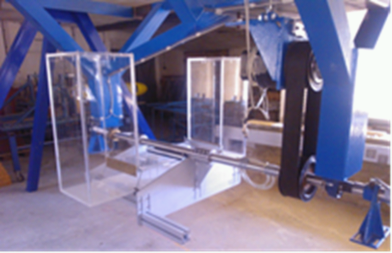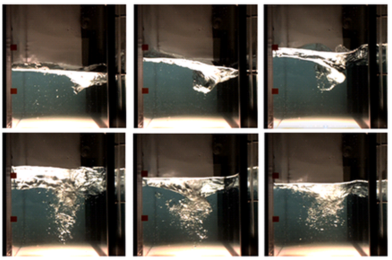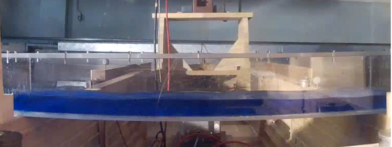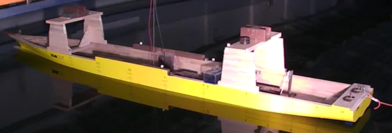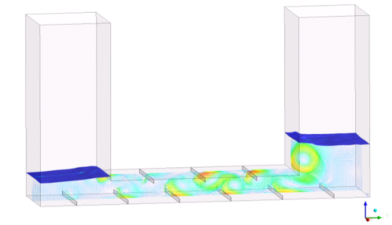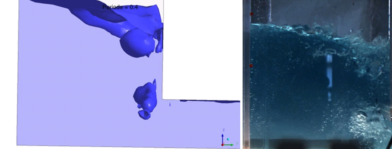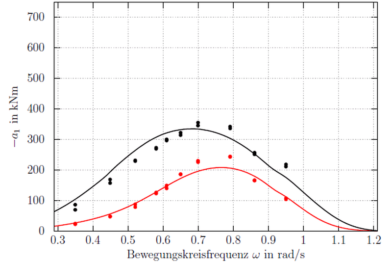Two Frahm tanks and a box tank were designed for testing on the roll system. The experimental program included measurements with sinusoidal excitation, variation of the frequency, roll amplitude, and the fill level of the tank. Differing variants of internals within the tanks were taken into account. The evaluation of the measurements was supported by video recordings and the use of ultrasound probes.
The laboratory tests were carried out in the towing tank with specially designed Frahm and Box tanks with variation of metacentric height, wave height, wave length as well as the sea state in regular and irregular seas. In order to ensure defined boundary conditions for the validation, the tests were carried out in beam seas without any speed.
For further evaluation of the laboratory tests and process development, RANSE calculations were performed for selected cases.
The starting point for the method to be developed was the Morison equation, which was expanded with respect to the parts of a developed vortex system proportional to speed and acceleration. As a result, coefficients of resistance and damping are supplied which then are corrected with empirical formulas depending on the obstruction in the tanks. In the further development, shallow water equations were used, which were extended for the developed non-linear parts. These equations formed the basis for subsequent non-linear tank calculations using the nonlinear strip method ROLF. To this end, the ROLF method was extended with additional tools for tank calculation, which distinguishes it from the STRIP method (linear strip method form the software system UTHLANDE). Extensive simulations were carried out using the new method and were compared with the results of the laboratory tests for their validation.
Extensive validation and comparison with previous methods show that the implementation of the new method in ROLF allows a fast and efficient prediction of the roll damping effect of the tank, especially in the case of large roll amplitudes. For the first time, and in contrast to the STRIP method, effects of parametric roll excitation of ships with roll damping tanks can also be determined. The use of the method for projects in the shipbuilding industry is therefore sensible in areas where minimal roll movements of the ship during operation are important even in extreme seas to minimize the risks to crew and ship. In addition to passenger ships and yachts, the future market is being seen in applications for offshore industrial projects. These include work boats and supply vessels for wind power and offshore installations, where it must be possible to come alongside and land in strong sea states. Lastly and importantly, the use of the procedure contributes to advances in ship safety.
Author: Dr.-Ing. Matthias Fröhlich, Schiffbau-Versuchsanstalt Potsdam GmbH
